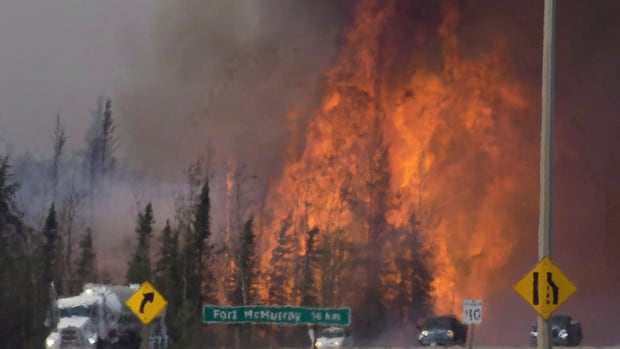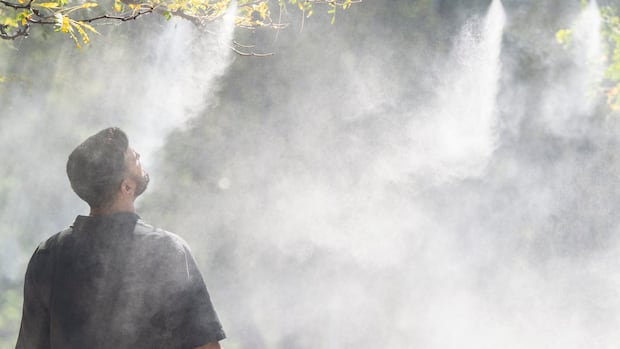Jasper, Lytton, Los Angeles, Fort McMurray — the last few years have been filled with unprecedented fire disasters, taking lives and destroying communities and economies.
Now, scientists have the data to show how these societally destructive wildfires — ones that kill people and cause huge financial losses — are growing all across the world and are becoming much more common because of climate change.
“I think for wildfires in many environments, it’s not a question of if a fire is going to happen, it’s more about when it’s going to happen,” said John Abatzoglou, co-author of the study and professor at the University of California Merced.
The sweeping assessment, published on Thursday in the journal Science, relied, in part, on proprietary data usually only available to insurance and financial institutions. Using information from Munich Re, the re-insurance company, the paper showed how destructive fires have spiked in recent years.
The study looked at the 200 most destructive fires from 1980 to 2023 — fires with the highest financial costs relative to a nation’s GDP — and found their frequency had increased sharply since 2015. Over the study’s time period, fires causing 10 or more deaths have become three times as frequent.
Since 1980, the study counted 43 wildfire disasters that cost over $1 billion US; half of them happened in the last decade.
“This is really a product of, certainly, warmer, drier climate,” Abatzoglou said.
“But also this expanding bullseye phenomena where we just have more people and assets in fire-prone environments.”
The increase in fire destruction dovetails with the worsening of climate conditions that cause more fires, the researchers said, a phenomenon driven by human activity, especially the burning of fossil fuels. And overall, the study shows how humans face a new reality where they will have to adapt to and learn to manage increasing fire risks close to home.
“What this study does really well is it looks across the entire planet, [showing] an increase in the frequency of these disastrous wildfire events and the impacts that they’re having on our society,” said Mathieu Bourbonnais, co-director of the University of British Columbia Centre for Wildfire Coexistence and a former firefighter.
“It kind of speaks to both that link to climate change being a global issue and, and how some of those impacts are felt locally.”
New research from non-profit group Climate Central shows that due to climate change Canadians are facing more ‘risky heat’ days, which the group’s analysis defines as when it’s hotter than 90 per cent of local temperatures between 1991 and 2020.
Canada is in the bullseye
The study shows increasing fire risks in the western U.S. and Canada, which indicates that “Canada absolutely has a bullseye on it,” according to Jason Thistlethwaite, professor at the University of Waterloo who studies approaches to reducing the economic impacts of climate disasters.
“We need to start treating this as a national problem, an industrial project … just like these ports and pipelines we’re talking about,” he said.

That means making significant investments to get communities ready for wildfires — everything from managing vegetation in parks and other managed forests to expanding programs like FireSmart, which raises awareness around making homes and buildings more fire resistant to funding more firefighters.
“We not only need the resources going towards preparedness but we also need to be ready for response,” Thistlethwaite said.
“We know how to battle wildfires in Canada. We’re excellent at it in fact, but we’re resource starved.”
Access to data on high-risk areas
The good news about having a bullseye, Thistlethwaite says, is that there’s information on where best to direct those resources. Several fire disasters like Los Angeles in and Jasper in happened after 2023 — the end of the study’s assessment period — and in areas designated as high risk.
The challenge is to make the data available to regular people in ways they can use it. Thistlethwaite said the insurers have invested a lot of money into building their risk databases, and would keep the data private because it belongs to them and gives them a competitive advantage.
“I think that’s fine. They’ve got a case to be made there. At the same time, these same industries are asking Canadians to pull up their bootstraps and make changes to their property. [And] they don’t know why they ought to,” he said.
Thistlethwaite is working on a project to improve access to climate risk information — including for fires — for people and local municipalities. He says without such easily accessible data, it becomes tough to convince people to take expensive adaptation measures to adapt to climate risks without knowing what the benefits will be.
“Canadians are adults. We know dollars and cents. When you give that to them, they’ll take the action,” he said.









